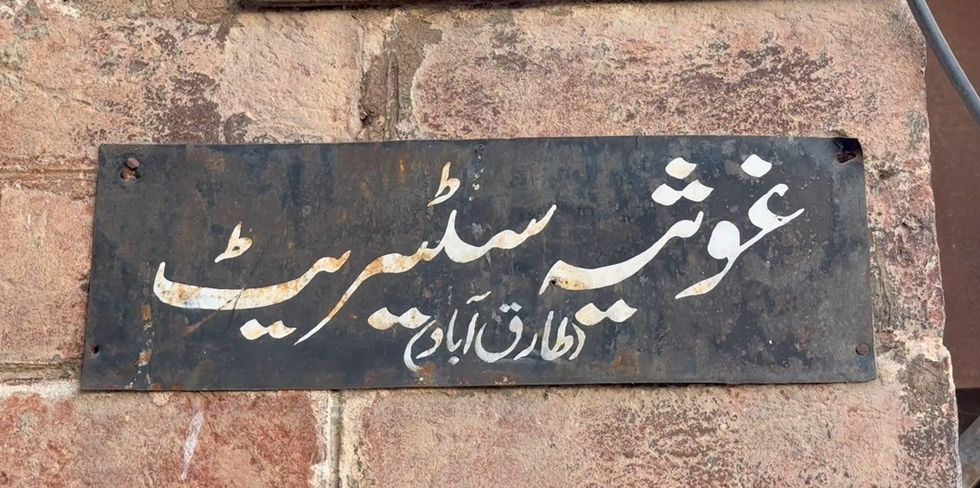Gandhi Gali: A forgotten chapter in Rawalpindi’s history
Once a hub of harmony, Rawalpindi’s Gandhi Gali — or Ghausia Street — holds stories of coexistence before partition in 1947

Asma Kundi
Producer, Islamabad
Asma Kundi is a multimedia broadcast journalist with an experience of almost 15 years. Served national and international media industry as reporter, producer and news editor.
A city steeped in history and culture, Rawalpindi carries echoes of its diverse past in its streets. Among its bustling lanes is a forgotten chapter: a street once called Gandhi Gali.
Although renamed Ghausia Street decades ago, its old buildings, ancient temple, and stories of harmonious communities offer glimpses of an era lost to time.
Before the partition of India in 1947, Gandhi Gali was a vibrant hub for Rawalpindi’s Hindu community. Named after Mahatma Gandhi, the street was home to traders and families who coexisted peacefully with their Muslim neighbors. Today, though its name has changed, its walls and landmarks still preserve the memory of that shared heritage.
A name that echoes history
Gandhi Gali emerged during a time when Rawalpindi’s markets thrived with a mix of Hindu and Muslim cultures. Hindu families living in the area named the street in honor of Mahatma Gandhi.
However, the partition of 1947 reshaped the city. Hindu residents migrated, and new Muslim families moved in, transforming the street’s identity. Over time, a neglected open drain earned it the nickname Gandi Gali (dirty lane).

By 1982, residents petitioned the Cantonment Board to rename the street officially as Ghausia Street. While the new signboard reflected the change, the name Gandhi Gali lingers in the memories of many, a reminder of the area’s historical roots.
Buildings that tell a story
The street still hosts pre-partition-era structures, including an old Hindu temple that stands at its far end. Once vibrant with cultural activity, the lane now bears signs of neglect but retains its connection to Rawalpindi’s multicultural past.

Long-time resident Ghulam Mohiuddin recalls, “The name changed, but the street’s history is unforgettable. Even now, many call it Gandhi Gali.”
Gandhi’s visits to Rawalpindi
Historian Sajjad Azhar explains that the origins of the street’s name remain uncertain, though records confirm Gandhi visited Rawalpindi twice.
His first visit, in 1924, occurred during Hindu-Muslim riots in Kohat, when thousands of Hindus sought refuge in Rawalpindi. Gandhi, aiming to mediate, was stopped by British authorities from proceeding to Kohat.

Renowned writer Bhisham Sahni documented the visit in his book Balraj Mera Bhai. Gandhi stayed at lawyer Ram Pyara Lal’s home near Company Bagh (now Liaquat Bagh) and expressed joy upon learning of Sahni’s connection to the city.
Call to preserve heritage
Historian Sajjad Haider reflects, “Gandhi Gali symbolizes Rawalpindi’s once-thriving multicultural harmony. The renaming reflects changing historical dynamics, but the street remains a window into the city’s layered past.”
While much of its history fades under modernity, Gandhi Gali—or Ghausia Street—stands as a poignant reminder of transformation and coexistence. Preserving its story could illuminate Rawalpindi’s rich heritage and foster an appreciation for its timeless legacy.











Comments
See what people are discussing